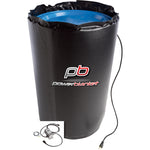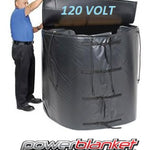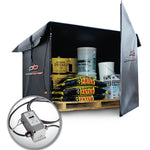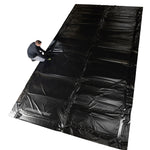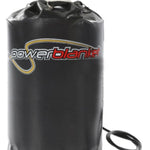You have no items in your shopping cart.
Article At-a-Glance
How Can You Effectively Use Mortar in Cold Weather?
To ensure mortar cures properly in cold weather, maintain temperatures above 40°F (4.4°C) by using heated masonry curing blankets, which provide consistent heat distribution and prevent freezing, allowing for optimal curing and strength gain even in sub-zero conditions.
Key Takeaways
- Understand Cold Weather Effects: Cold temperatures slow down mortar curing, increase water requirements, and reduce strength gain, making it crucial to maintain optimal conditions for effective masonry work.
- Implement Best Practices: Use heated masonry curing blankets to maintain temperatures above 40°F (4.4°C), ensuring consistent heat distribution and preventing freezing during the curing process.
- Modify Mixing Techniques: Consider using additives like calcium compounds and mix in smaller batches to adapt to cold conditions, ensuring the mortar sets properly.
- Protect and Insulate: Employ protective measures such as insulation or creating heated environments to safeguard the mortar from premature freezing and ensure long-term durability.
- Follow Technical Guidelines: Adhere to specific cold weather construction standards (ACI 530.1-08/ASCE 6-08/TMS 602-08) to optimize mortar performance and avoid seasonal construction delays.
Now you can cure masonry all winter long - Keep crews working and produce a higher quality product. No joke! Heated masonry curing blankets allow for more optimal curing temperatures even in the dead of winter. Insulated, heat welded seams, even heat distribution and water resistant. Simply lay out the blanket on your masonry project, plug in the power and the blanket does the rest. Keep ahead of your competition and stay ahead of schedule. Temperatures below zero? No problem. Heated Masonry Blankets get the job done.
------------------
The Specification for Masonry Structures: (ACI 530.1-08/ASCE 6-08/TMS 602-08) contains minimum requirements for cold weather masonry construction.When ambient temperature falls below 40°F (4.4°C), cold weather construction applies.As the temperature of mortar materials falls below normal:
• water requirement to reach a given consistency is reduced
• a given amount of air-entraining agent yields more entrained air
• initial and final set of the mortar are significantly delayed
• heat-liberating reaction rates between portland cement and water are substantially reduced, becoming minimal as mortar temperature drops below 40°F (4.4°C)
• strength gain rates are reduced
As cold weather arrives, builders must take precautions when doing masonry construction. By changing procedures, equipment, or supplies, mason contractors can avoid seasonal delays associated with cold weather.This permits better utilization of a mason contractor’s resources, particularly manpower. Successful masonry construction can proceed despite cold temperatures by following an effective cold weather construction program. You get the picture! Utilize a heated masonry blanket and avoid those costly weather delays. Put mother nature back in her place w/ thermal masonry heat blankets from Heat Authority.







